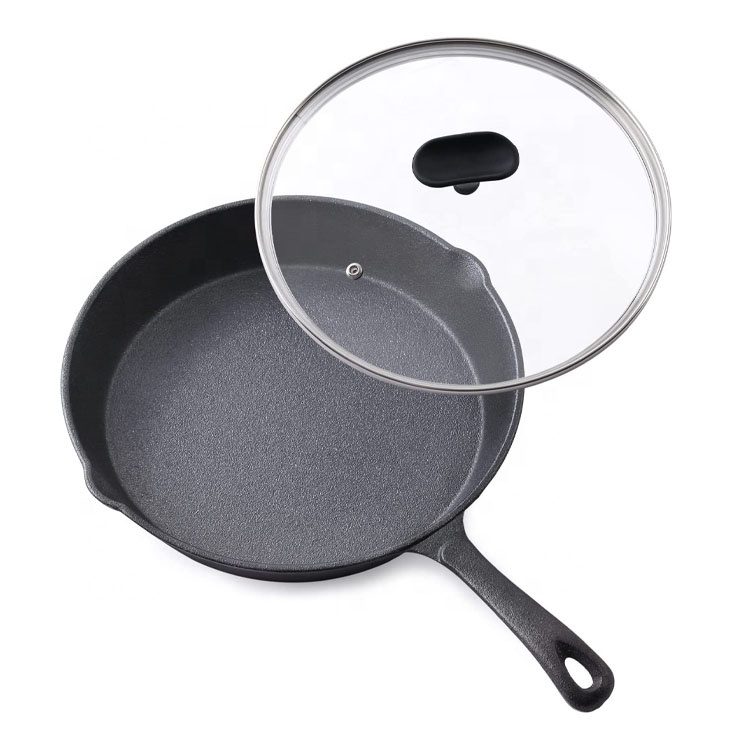
cast iron pan weight
Understanding the Weight of Cast Iron Pans
Cast iron pans are a staple in many kitchens, prized for their ability to retain heat and develop a natural non-stick surface when seasoned correctly. However, one aspect of these pans that often raises questions among both novice and experienced cooks is their weight. This article delves into the factors influencing the weight of cast iron pans, why it matters for cooking, and how to choose the right weight for your needs.
The Basics of Cast Iron
Cast iron is a type of iron-carbon alloy that is known for its durability and heat retention properties. The material is poured into molds, which gives cast iron pans their characteristic shapes and sizes. The weight of a cast iron pan can vary significantly based on its size, thickness, and design.
Typically, a standard 10-inch cast iron skillet weighs around 5 to 7 pounds. Smaller skillets (like those around 6 inches) can weigh as little as 2 pounds, whereas larger skillets (12 inches or more) might weigh up to 10 pounds or even more. Some specialty cast iron cookware, such as Dutch ovens, can weigh upwards of 12 pounds when empty.
Factors Influencing Weight
1. Size The most significant factor in the weight of a cast iron pan is its size. Larger skillet and cookware designs naturally require more metal, thus increasing their weight.
2. Thickness The thickness of the pan’s walls also contributes to its weight. Thicker pans tend to provide better heat retention and durability but weigh more.
3. Design Certain designs, such as those featuring added handles or intricate patterns, can increase weight. While decorative elements can enhance aesthetics, they may not always provide added functionality.
4. Material Density The type of cast iron used can vary slightly in density, which can affect weight. Most cast iron cookware is made from gray cast iron, but variations like enameled cast iron can have different weight characteristics.
Why Weight Matters
cast iron pan weight

The weight of a cast iron pan can affect cooking performance in several ways
- Heat Retention Heavier pans tend to retain heat better. This characteristic makes them ideal for searing meats, as they can maintain high temperatures for longer periods.
- Durability A heavier pan is often made from solid material that can withstand high cooking temperatures and frequent use. This durability ensures that your investment lasts for generations when cared for properly.
- Stability A heavier pan tends to be more stable on the stovetop, reducing the risk of tipping or sliding, which can be especially important when cooking with high heat.
Choosing the Right Weight
When selecting a cast iron pan, consider how you'll use it. If you’re looking for a versatile option for everyday cooking, a mid-weight 10 to 12-inch skillet is often the best choice. It’s manageable for most people while still providing enough weight for optimal cooking performance.
For those who may have difficulty lifting heavier pans, lightweight options are available. Some brands offer cast iron cookware with a thinner design that retains many benefits of traditional cast iron but is easier to manage. However, these lighter versions might not offer the same level of heat retention as their heavier counterparts.
Caring for Your Cast Iron
The weight of cast iron pans also influences the way you care for them. Due to their substantial weight, handle with care during cleaning and storage. Avoid soaking them in water and instead, clean them with minimal liquid and a stiff brush after use to prevent rusting. Season your cast iron regularly to maintain its non-stick surface and enhance its lifespan.
Conclusion
In summary, the weight of a cast iron pan is an essential consideration that impacts its functionality, durability, and ease of use. By understanding the factors that contribute to a pan’s weight and how it relates to your cooking habits, you can choose the right cast iron pan that suits your culinary needs. Whether you prefer a heavy skillet for serious searing or a lightweight option for everyday dishes, the world of cast iron has something for everyone. Embrace the tradition of cast iron cooking, and enjoy the delicious results that come from this time-honored cookware.
-
Season Cast Iron Perfectly with GPT-4 Turbo TipsNewsAug.01,2025
-
High Quality Cast Iron Cookware - Baixiang County Zhongda MachineryNewsAug.01,2025
-
Premium Cast Iron Pan: Durable & Perfect HeatNewsAug.01,2025
-
High Quality Kitchen Durable Black Round Cast Iron Cookware Pancake Crepe Pan-Baixiang County Zhongda Machinery Manufacturing Co., Ltd.NewsAug.01,2025
-
Cast Iron Cookware - Baixiang County Zhongda Machinery | Nonstick, Heat ResistanceNewsAug.01,2025
-
High Quality Kitchen Durable Black Round Cast Iron Cookware - Baixiang County Zhongda Machinery | Non-Stick, Heat Retention, DurableNewsJul.31,2025


